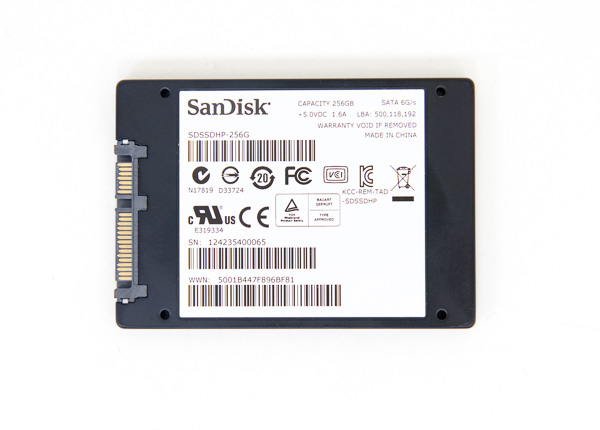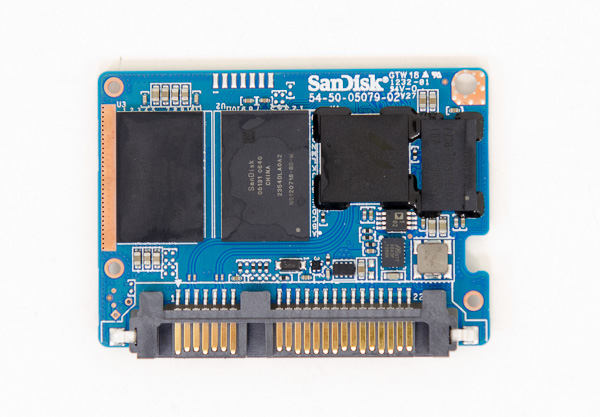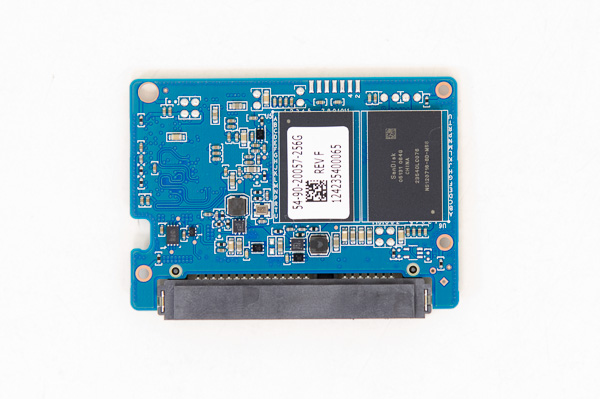SanDisk Ultra Plus SSD Review (256GB)
by Anand Lal Shimpi on January 7, 2013 9:00 AM ESTFinal Words
The Ultra Plus isn't the fastest drive we've ever tested, and most other drives in its price range tend to deliver better performance. Worst case performance consistency isn't great but it's better than Samsung's SSD 840 Pro, so you're going to want to leave at least 25% of the drive free in order to avoid annoying performance variation. The drive's redeeming qualities are basically that it is still a decent performer (way better than a hard drive), and is reasonably low power. The drive PCB itself is very small, potentially paving the way for some interesting, smaller-than-2.5" form factors.
The SanDisk brand likely means something here as well. Any company that has to supply to major OEMs has to have good validation and qualification methods in place, which I'd hope translates into good reliability for the Ultra Plus.
Overall the Ultra Plus is a tough drive to recommend over other similarly priced SSDs simply because it doesn't perform as well as its competitors same price class. If low power is a concern however, the Ultra Plus may fit the bill if you have a niche application. Unlike many SSDs in the past, even though the Ultra Plus isn't the best, it's still better than a hard drive. If you can find one for significantly less than its MSRP and are looking to upgrade a light use system to an SSD, I wouldn't have a problem considering the drive. The trick would be finding an Ultra Plus that's cheaper than the Samsung SSD 840 and the Intel SSD 335, which I'm not sure will happen all that frequently.
Architecturally I'd like to see something more aggressive from SanDisk. Samsung needs another competitor and I believe SanDisk could be that competitor, but it needs to get more aggressive on pursuing performance. SanDisk already has the power side figured out, the question is whether or not it can drive performance up even higher at the same time.
Most of my experiences with SanDisk drives have been in OEM systems, and there I haven't been pleased. OEMs tend to like SanDisk thanks to its very attractive pricing and reliability track record. If the Ultra Plus' controller + firmware combination can make it to SanDisk's OEM client products, I'll be a lot happier.













38 Comments
View All Comments
Samus - Monday, January 7, 2013 - link
I'm just dying for a mainstream Intel S3700 to hit the consumer corner...Beenthere - Monday, January 7, 2013 - link
Few if anyone would be able to differentiate a noticeable actual system performance change no matter which one of the listed SSDs they chose. SanDisk hasn't yet learned how to dupe the benches but in due time their numbers will increase similar to the others.If you're going to buy an SSD you should do your homework so you know the liabilities and realities including reliability and campatibility issues, lost data, drive size change, etc. If you want an eye opener read the warranties on SSDs at the respective SSD mfg. websites.
mrdude - Monday, January 7, 2013 - link
"The drive PCB itself is very small, potentially paving the way for some interesting, smaller-than-2.5" form factors."That's the most interesting bit, I find. Those things are absolutely tiny. So tiny that it kind of makes you wonder if standardizing the NGFF cards is even worth it going forward. If you need small storage then you can just stick with the standard SATA connectors on an itsy bitsy drive.
Very cool :)
vol7ron - Monday, January 7, 2013 - link
n-TB sizes that much more of a coming realitySmCaudata - Monday, January 7, 2013 - link
I picked up a SanDisk extreme 240 last year for about 50¢ per GB and I'm happy. Even during black Friday I didn't see anything cheaper and this drive is fast. The difference between most ssd now is academic. User experience is nearly the same for average consumers.mayankleoboy1 - Monday, January 7, 2013 - link
Isnt it the same that OCZ implemented in Vertex4 f/w 1.4 ?blowfish - Monday, January 7, 2013 - link
So for XP users, would a drive that doesn't support Trim be the way to go, since MS decided not to add Trim to XP in order to push Win7?randinspace - Monday, January 7, 2013 - link
Upgrading to Windows 7 (and pretending like 8 didn't happen even though it has enviable features...) is the way to go. Seriously speaking (upgrade), it's not like a drive that has TRIM support is going to be a bad thing even if you can't use it, but see the above comments about Sandforce controllers in general/Intel's 335 series SSDs in particular. Or even see the comments about hacking in TRIM support, IF YOU DARE!FWIW I'm very happy with the performance of my (240GB) 335. I'd probably buy another one to put in my laptop if they weren't going for $40 more than what I paid last month...
dave_the_nerd - Monday, January 7, 2013 - link
They all support TRIM. None REQUIRE it.If your OS doesn't support TRIM commands, you just have to find the drive with the best built-in GC routines. That used to be Sandforce, but I don't know anymore.
kmmatney - Monday, January 7, 2013 - link
With Samsung and Intel SSDs you can just run their toolbox software to do a manual TRIM. Iknow you can schedule it automatically with the Intel SSD Toolbox, and I think you can do that with the Samsung software as well. I've had a 40GB Intel SSD running on Windows XP for 2+ years and the TRIM scheduler works great.